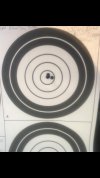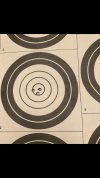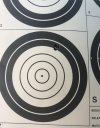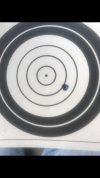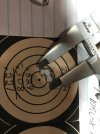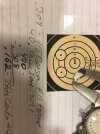Playtimefun
Well-Known Member
- Joined
- Dec 9, 2017
- Messages
- 237
I think it's all a case of how anal you want to be. Back when I was shooting IPSC, I would single stage reload 400 shells over 2 or 3 nights for a weekend shoot. Weighing every load to 0.1 grams on a RCBS balance scale that I always checked and calibrated for a load. Friends laughed their asses off at me, but I never had a missfire or double powder charge ever and other guys of course did.
I think it's a personality thing. I overkill everything I generally do (engineer by trade). As an example I built a welding/work table and when the wife asked if she could stand on it to reach the shelf above, I stood back and realized that I could park a truck on it let alone have someone sit on it.
Unfortunately, I don't have an electronic trickle charge scale (I want one but when the prices went stupid, I had missed out), but all I would use it for is to put it on my good old scale anyways. So the old power throw works just find for me along with a 40 year old RCBS powder trickler and a tiny pointed spoon for taking out extra.
Now I don't competitively shoot, but I practice and shoot long range because even though I am set up for a 1000 yard shot, I would much sooner sneak up within 100 yards (or whatever) and pug it down. But if I can't... I want to be able to pull the trigger on a load that I know will hit where I point... IF... I do my part and sometimes that's a big question depending upon how much practicing I'm doing lol.
I think it's a personality thing. I overkill everything I generally do (engineer by trade). As an example I built a welding/work table and when the wife asked if she could stand on it to reach the shelf above, I stood back and realized that I could park a truck on it let alone have someone sit on it.
Unfortunately, I don't have an electronic trickle charge scale (I want one but when the prices went stupid, I had missed out), but all I would use it for is to put it on my good old scale anyways. So the old power throw works just find for me along with a 40 year old RCBS powder trickler and a tiny pointed spoon for taking out extra.
Now I don't competitively shoot, but I practice and shoot long range because even though I am set up for a 1000 yard shot, I would much sooner sneak up within 100 yards (or whatever) and pug it down. But if I can't... I want to be able to pull the trigger on a load that I know will hit where I point... IF... I do my part and sometimes that's a big question depending upon how much practicing I'm doing lol.

